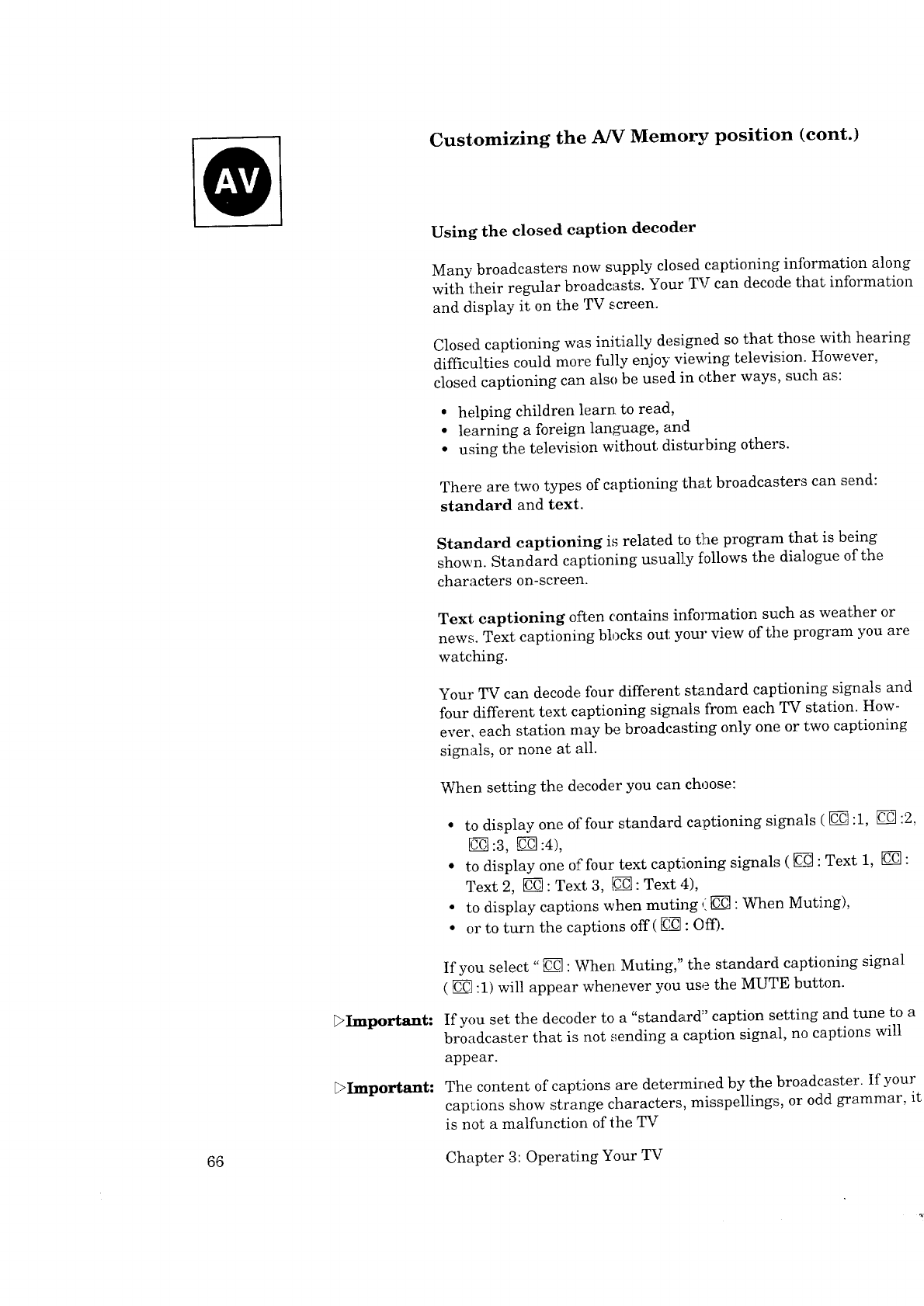
Customizing the AN Memory position (cont.)
Using the closed caption decoder
Many broadcasters now supply closed captioning intbrmation alonl
with their regular broadcasts. Your TV can decode that informatio
and display it on the TV screen.
Closed captioning was initially designed so that those with hearin
difficulties could more fully enjoy viewing television. However,
closed captioning can also be used in other ways, such as:
• helping children learn to read,
• learning a foreign language, and
• using the television without disturbing others.
There are two types of captioning that broadcasters can send:
standard and text.
Standard captioning is related to the program that is being
shown. Standard captioning usually follows the dialogue of the
characters on-screen.
Text captioning often contains information such as weather or
news. Text captioning blocks out your view of the program you ar
watching.
Your TV can decode four different standard captioning signals ar
four different text captioning signals from each TV station. How-
ever, each station may be broadcasting only one or two captionint
signals, or none at all.
When setting the decoder you can choose:
• to display one of four standard captioning signals ( D :1, D :
:3, _] :4),
• to display one of four text captioning signals ( _ : Text 1,
Text 2, _ : Text 3, [C_: Text 4),
• to display captions when muting ( _ : When Muting),
• or to turn the captions off ( _ : Off).
_Important:
_Important:
If you select "_: When Muting," the standard captioning signal
( _ :1) will appear whenever you use the MUTE button.
If you set the decoder to a "standard" caption setting and tune to
broadcaster that is not sending a caption signal, no captions wil!
appear.
The content of captions are determined by the broadcaster. Ifyo
captions show strange characters, misspellings, or odd grammar
is not a malfunction of the TV
66 Chapter 3: Operating Your TV


















